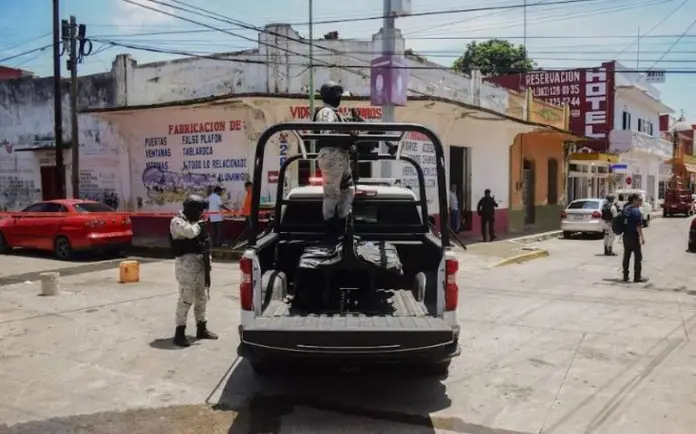
The number of intentional homicides increased by 237 percent in the 12 municipalities of Chiapas included in the security strategy of the new federal government for the first 100 days.
These municipalities were considered priority regions to reduce the incidence of homicides during the first 100 days of Claudia Sheinbaum’s government. They are Tapachula, Suchiate, Tuxtla Gutiérrez, Villaflores, Pantelhó, Villa Corzo, Chiapa de Corzo, Berriozábal, Tila, Pueblo Nuevo Solistahuacán, Ocozocoautla de Espinosa, Palenque.
While in the first half of 2023, 89 intentional homicides occurred in the 12 municipalities, between January and June 2024, the number of crimes rose to 211, according to data from the National Citizen Observatory. This translates into an increase of 237 percent.
The alleged murderer of filmmaker Víctor Muro is arrested in Veracruz
The 211 homicides recorded in the 12 municipalities by the Observatory also represent 57 percent of the total murders that occurred throughout the Chiapas territory between January and June. That is to say, six out of ten homicides occurred in the municipalities that are priority for the federal government.
The plan states that Chiapas, despite not being one of the states with the highest incidence of high-impact crimes, will receive strategic attention due to the prevalence of homicides.
According to the diagnosis, intentional homicides linked to organized crime are constantly growing due to the dispute between antagonistic criminal groups.
The document proposes actions such as addressing the causes with social programs, permanent presence of security forces for prevention, peace building with community development, and intelligence for the deployment of operations.
In recent days, elements of the Mexican Army have set up checkpoints and security operations in different parts of Tapachula.
Organized crime
The data show that in Chiapas, the activities of two international criminal groups predominate, which are fighting over territory: the Sinaloa Cartel and the Jalisco Nueva Generación Cartel.
The incursion of both groups in the southern state triggered a wave of violence three years ago. In addition to homicides, the Mexican Editorial Organization has documented the incidence of disappearances, human trafficking, extortion and forced internal displacement.
With the change of municipal governments, at the beginning of October, the OEM documented that at least 15 of the 124 municipalities of Chiapas inherited social conflicts and insecurity from previous administrations. These are Pantelhó, Chenalhó, Oxchuc, San Cristóbal de Las Casas, Altamirano, Venustiano Carranza, Frontera Comalapa, Chicomuselo, La Concordia, Ángel Albino Corzo, Villaflores, Motozintla, Amatenango de la Frontera, Tila and Mazapa de Madero
Pantelhó, one of the priority municipalities of the federal security strategy, is one of the regions where the elections of June 2 and the extraordinary elections of August 25 were not held due to lack of security conditions. Crimes such as disappearances predominate in the same district.
San Cristóbal de las Casas is another municipality where insecurity permeates, and despite the fact that there is no incidence of intentional homicides, this municipality maintains refugees from other municipalities such as Chenalhó.
Another district with security problems is Amatenango de la Frontera, where due to clashes between organized crime, residents have had to flee and take refuge in Mazapa de Madero and in the neighboring country of Guatemala.
Clashes between criminal groups have also been recorded in other municipalities such as Ángel Albino Corzo, La Concordia or Frontera Comalapa. These municipalities are not currently considered priority areas. According to the Observatory’s figures, the incidence of intentional homicides has not increased in these municipalities.
Source: elsoldemexico






